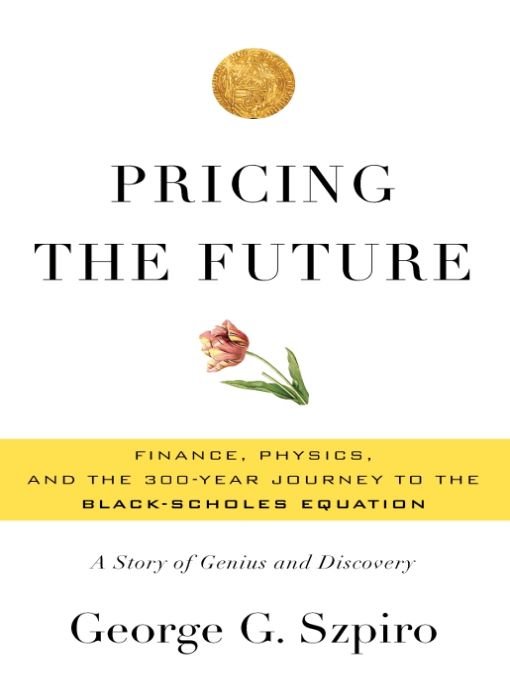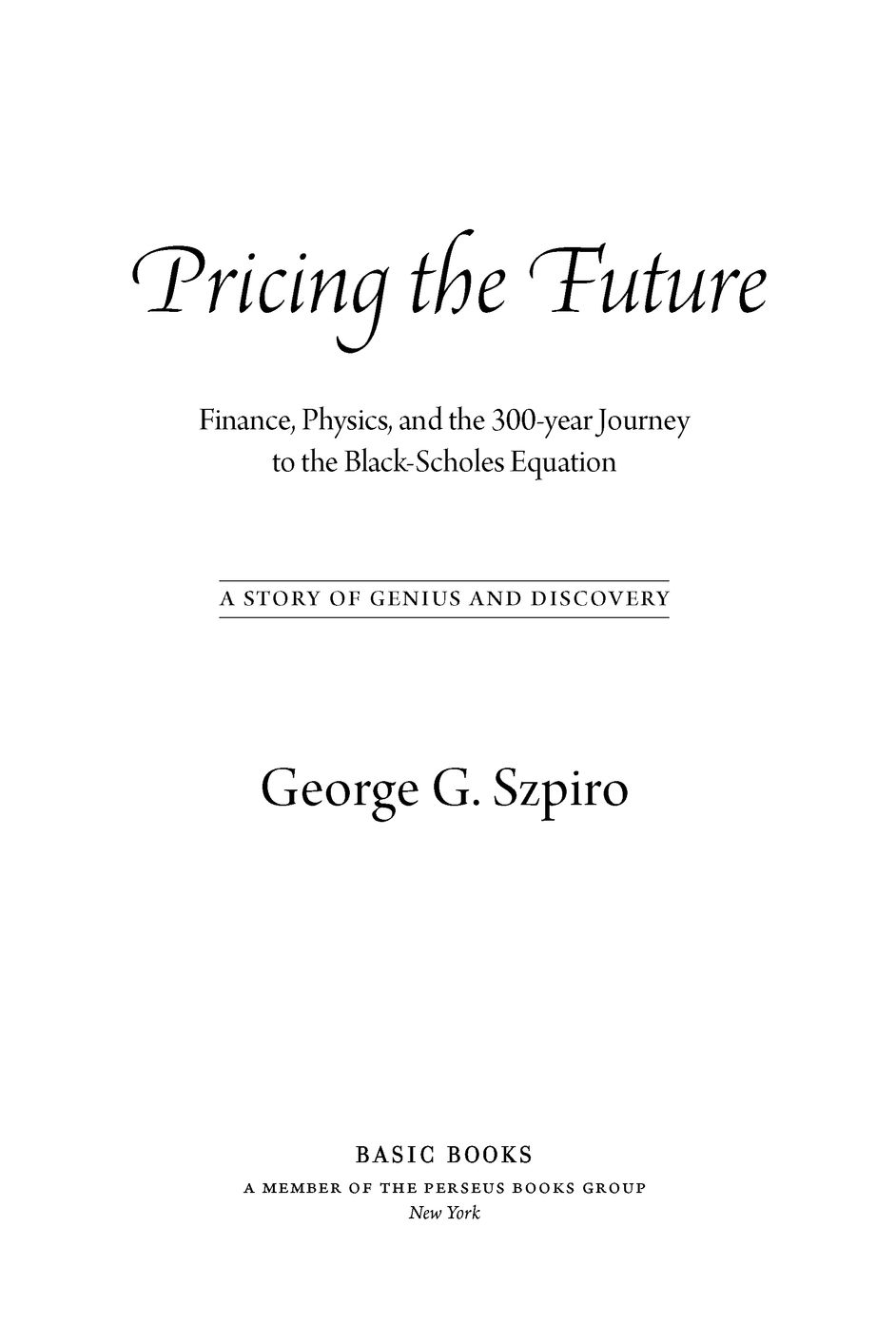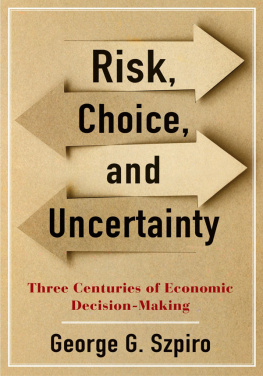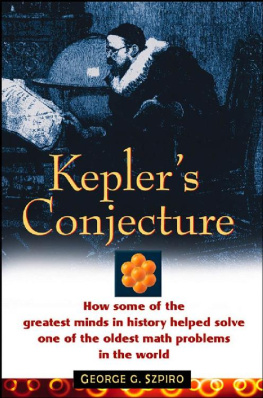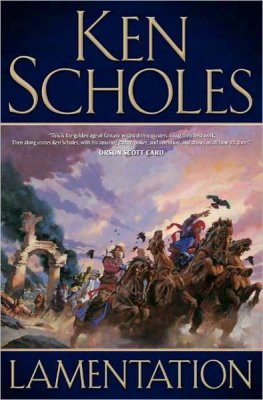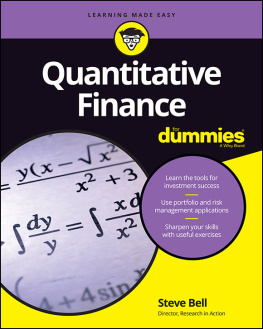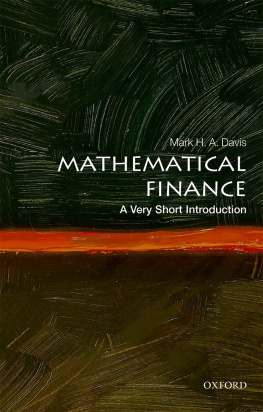Table of Contents
ALSO BY GEORGE SZPIRO
Keplers Conjecture: How Some of the
Greatest Minds in History Helped Solve One of the
Oldest Math Problems in the World
The Secret Life of Numbers: 50 Easy Pieces on
How Mathematicians Work and Think
Poincars Prize: The Hundred-Year
Quest to Solve One of Maths Greatest Puzzles
A Mathematical Medley:
50 Easy Pieces on Mathematics
Numbers Rule: The Vexing Mathematics
of Democracy, from Plato to the Present
It is my sincere hope that
by the time you read this,
Gilad Shalit is back with his family.
PREFACE
Options have been traded for hundreds of years, at least since the sixteenth century, when they were used to buy and sell commodities in Antwerp and Amsterdam. But nobody knew what the true value of an option really was. For centuries, their prices were determined by supply and demand, with investors estimating their value on the basis of gut feelings. Indeed, it was not even known what determines the value of an option, whether the current price of the underlying stock, commodity, or asset, the rate of interest, investors attitudes toward risk, the time remaining until expiration of the option, and so on. However, options do have a mathematically precise value. The equation that gives the correct price was found by financial economists Fischer Black, Myron Scholes, and Robert Merton in 1973. Their discovery was considered a singular achievement, comparable to Newtons discovery of the laws of motion. Scholes and Merton were awarded the Nobel Prize in 1997. (Fischer Black had died two years earlier, at the age of 57.) However, disaster followed the Nobel Prize. The spectacular near bankruptcy of Long-Term Capital Management, the billion-dollar company that Scholes and Merton had helped found, proved that high academic achievements do not guarantee financial success.
Spanning the period from the middle of the seventeenth century until nearly today, this book traces the historical and intellectual developments that led to the options pricing formula. It describes the search for the elusive equation but emphasizes the personalities behind that search. Some of the people who appear are medical doctor Robert Brown (of Brownian motion fame), three French accountants and stockbrokers ( Jules Regnault, Henri Lefvre, and Louis Bachelier), Albert Einstein, Wolfgang Dblin (a German Jewish soldier in the French army during World War II), MIT mathematician Norbert Wiener, Russian pioneer of probability theory Andrey Kolmogorov, Japanese mathematician Kiyoshi It, and American economist Paul Samuelson.

At this point in a preface, it is customary to thank those who helped in the preparation of the book. Here I must make an exception. One organization to which I can offer no thanks is the Institut des Actuaires in Paris. It is one of the very few places where the early volumes of the Journal des Actuaires Franais are stored, which contain some articles pertinent to this book. Unfortunately, after I had been given the runaround for approximately half a year by an extraordinarily unhelpful secretary, it was only when my wife visited Paris that the articles could be copied. It took her all of fifteen minutes... apparently too much for an unwilling secretary.
My sincere thanks do go to Tim Bartlett, Adina Berk, and Collin Tracy of Basic Books for making the text much more readable than it was at the outset, and to Chrisona Schmidt for careful copyediting. My agent, Roger Williams of New England Publishing Associates, is always there when I need him. My wife, Fortune, did much more, of course, than just photocopy articles in Paris. I am also grateful to Simon Benninga, Franck Jo-vanovich, Wolfgang Hafner, Bernhard von Stengel, and Heinz Zimmermann for offering encouragement and reading parts of the manuscript.
I had lots of fun researching and writing this book, and I hope you, the reader, will enjoy it too.
JERUSALEM, JUNE 2011
INTRODUCTION
In June 1940, in a barn somewhere near the western front, a young man wearing a French army uniform burns a sheaf of papers filled with mathematical symbols and equations. He must move quickly; German troops are closing in on the French village where he is hiding. The soldier, the German-born son of a famous Jewish novelist, is determined not to be captured alive by the Nazis and not to let his scientific legacy fall into their hands. A few weeks earlier he had sent a manuscript containing a novel mathematical theory to Paris for safekeeping by the Acadme des Sciences. Now he must destroy any evidence of his work.
The sad story of Wolfgang (a.k.a. Vincent) Dblin is only a small part of the narrative that will be related in this book. For three centuries, accountants, speculators, investors, and scientists endeavored to find the holy grail of financial markets, the equation that could be used to compute the true value of a certain financial instrument: the elusive options pricing formula.
Like most chronicles of intellectual breakthroughs, this is a story of relentlessly driven and innovative people. I will tell this story of the development of ideas through the lives of the protagonistsaccountants and economists, physicists and chemists and mathematicians, academics and professional traders. After preludes in seventeenth- and eighteenth-century Amsterdam and Paris, the intellectual action began in nineteenth-century France. In the first half of the twentieth century, it moved all over Europe, then to Russia and then to Japan, before it finally reached its climax in the second half of the twentieth century in the United States.

Say you want to build a house in the suburbs and you find a plot for $100,000. Since you cant afford to buy it until next year, the seller is willing to reserve it for youat next years price. The price could double or it could drop by half. What should you do? If prices fall, you will profit, but if they rise you wont be able to afford the plot. Then the real estate broker has an idea. For a flat fee, she will assume the risk. If the price falls, you will pay the lower market price; if it rises, you will pay a maximum of $100,000, with the broker making up the difference. What a great idea! You will profit if the price falls, and you will not have to bear the risk of the price rising. The question is, How much should you pay the broker? How much does she demand?
Or think of a farmer who will need to buy fertilizer in six months. Unfortunately the price is volatile and a high price would significantly cut into his profits. He cannot afford the uncertainty. A middleman offers him the following deal: pay me a flat fee, and in six months I will sell you 300 pounds of fertilizer for 60 cents per pound, no matter what the actual price may be. The farmer agrees, a contract is drawn up, the fee is paid, and the waiting begins. Six months go by. When the time comes to execute the contract, the price of fertilizer has dropped to 55 cents per pound. The farmer buys what he needs on the open market and lets the contract expire. The middleman breathes a sigh of relief and happily pockets the fee. Chalking up the fee as an insurance premium against the risk of higher prices, the farmer is also happy. He got the fertilizer for a lower price. The crucial question, however, is, How much did the farmer have to pay the middleman?

